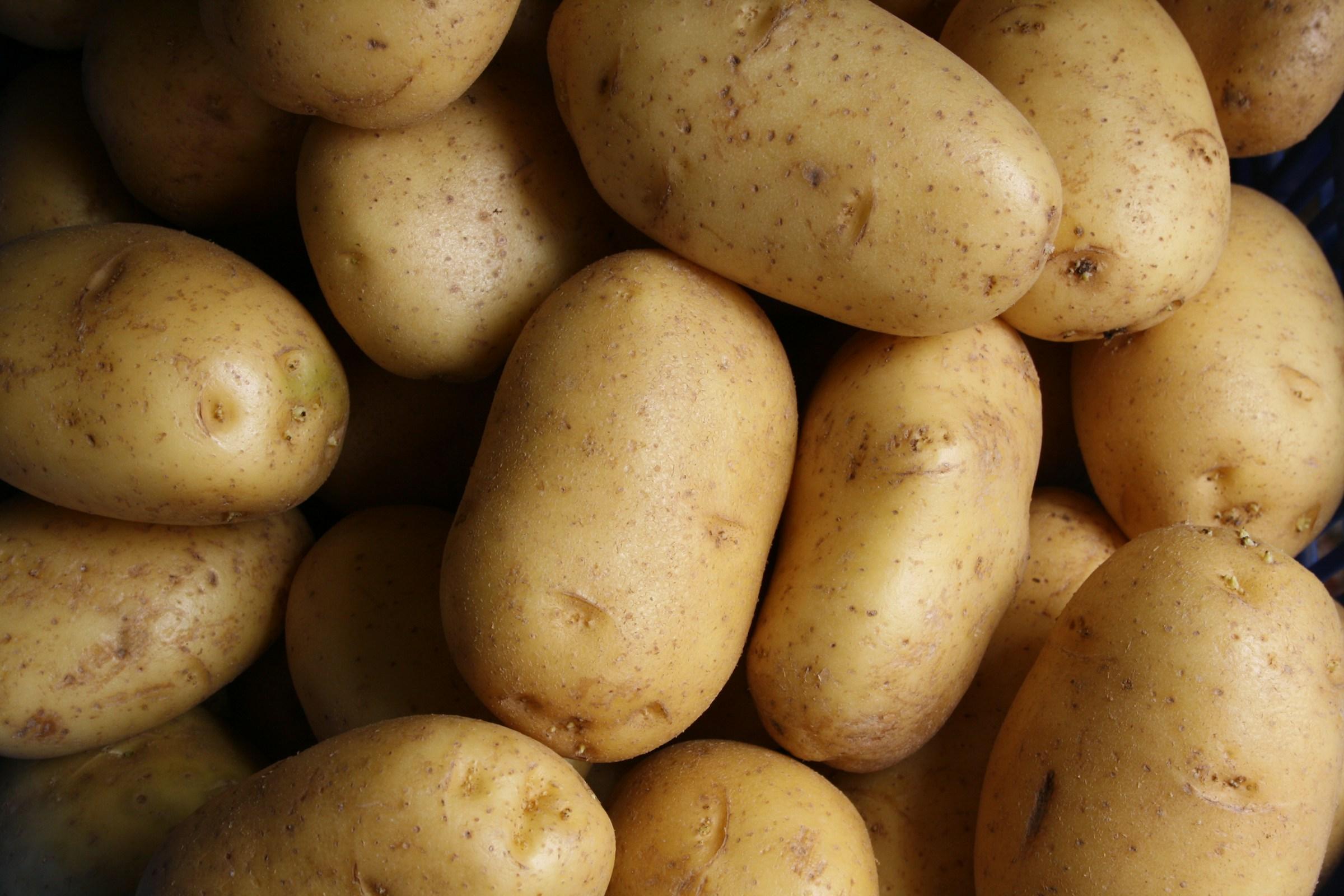A potato looks ordinary on the chopping board. It is pale, sturdy, and patient. Peel on or peel off, it sits with a quiet kind of promise that belongs in a real kitchen rather than a glossy advertisement. Roast it and you will feed your appetite. Cool it and you will feed your gut. That second path matters when the question is simple and precise. What organ are potatoes good for. The answer leads to the gut, especially the colon, where microbes do steady work that shapes digestion, immunity, and comfort in daily life.
Gut health does not need a trend to justify it. It is a system that operates whether you talk about it or not. The colon hosts communities of bacteria that behave like respectful housemates when the pantry suits them. They prefer fiber and complex carbohydrates that travel down the line without frenzy. Potatoes deliver fiber, but the more interesting part is resistant starch. This is the portion of starch that resists digestion in the small intestine. It arrives in the colon intact, where microbes ferment it into short chain fatty acids such as butyrate. Butyrate works like a maintenance crew for the cells that line the colon. It fuels them, supports the integrity of the barrier, and encourages a calmer inflammatory tone. You do not see any of this in the mirror. You feel it in steadier digestion, less irritation, and a sense that your meals land softly rather than loudly.
The cooking method decides what a potato offers. A hot, fluffy jacket potato is comfort on a cold evening. A cooled potato, cooked and then chilled, is function for your gut. When potatoes are boiled, baked, or steamed and then cooled, part of the starch undergoes a structural shift that makes it more resistant to your enzymes. That shift is not dramatic in the pot or pan. It is quiet in the fridge. The usefulness appears later, when microbes meet a meal that suits their style. You do not need to count grams at the table. You can design a weekly ritual that repeats without fuss.
Imagine a Sunday routine that does not feel like a diet, only like a house that cares for you. A pot of small potatoes simmers while you wipe the counter and water the plants. You drain them, let steam lift off, and slide them into a glass container. They rest in the fridge beside a jar of olive oil, a lemon, and a carton of yogurt. On Monday you turn a portion into a salad with a spoon of yogurt, chopped chives, and cracked pepper. On Wednesday you slice the leftovers into a pan with olive oil and a squeeze of mustard for brightness. Each time, you keep that cooled structure intact. Each time, your gut receives a quiet favor that builds across the week.
Texture becomes part of the pleasure. A cooled potato has a denser bite that plays well with crisp cucumbers, shaved fennel, or chopped celery. Acid from lemon or vinegar wakes up the neutral starch and helps the salad travel well to a desk or a picnic rug. Salt early and lightly, then taste again before serving. The result feels clean and clear. It respects the afternoon brain that prefers stability over a spike. You can spoon it from a bowl at your kitchen table or from a lunch box in a meeting room. Either way, your gut reads the meal as care rather than drama.
A potato can support a calmer life outside the plate too. It stores well. It is affordable. It needs only a dark corner of the pantry and a steady plan. Buy loose potatoes to avoid unnecessary packaging. Keep the skins on for more fiber and less food waste. If a potato sprouts, trim the eyes and use it soon. The kitchen stays simple. The bin stays light. The savings accumulate without a spreadsheet. Good habits become easier when they fit the way you already live.
Flavor does not need to fight function. Potatoes are friendly to herbs. Dill, parsley, chives, and tarragon lend fragrance without shouting. Whole grain mustard brings gentle bite. Olive oil adds silk and helps the bowl feel like a meal rather than a side. If you eat dairy, a kefir or yogurt dressing brings tang and live cultures that complement the resistant starch you have preserved. If you prefer plant based creaminess, stir tahini with lemon and a little grated garlic, then loosen with cold water until it ribbons. The dressing clings to cubes of potato and turns practicality into something you look forward to.
Portioning keeps the rhythm honest. Cook once for the week, but dress in small batches. Keep the cooked potatoes plain in one container and toss only what you plan to eat that day. This protects texture and avoids the soggy sadness that can sabotage good intentions. It also leaves room for variation. On day one you might add celery and green apple for crunch. On day three you might fold in roasted peppers and capers. On day five you might go for arugula, cherry tomatoes, and a crumble of feta. The base is steady. The week still feels fresh.
The gut is the lead in this story, but the heart waits just offstage. Potatoes bring potassium, which helps regulate fluid balance and supports steady blood pressure when you use salt with intention. A calmer gut can also nudge broader well being through immune signaling and through the gut brain axis that researchers keep exploring. These connections are not a tidy miracle. They are corridors inside your body, where small changes in one room influence the mood in another. Feed one part with consistency and the rest of the house tends to feel a little calmer.
Every home holds different needs, and some bodies need particular care. If you live with chronic kidney disease or have been advised to monitor potassium closely, work with a clinician on portions and preparation. If you manage blood sugar, let potatoes travel with protein, olive oil, and fiber rich vegetables. Eat them inside a bowl that carries balance, not as a solo act. Cooling helps here too, since resistant starch changes the way your body handles starch in the meal. The aim is not a perfect number on an app. The aim is a pattern that your life can sustain.
Children usually accept potatoes without negotiation. This makes them an easy on ramp for family fiber. Keep the skins on for wedges. Offer dips like yogurt with lemon and a dusting of paprika. Smash a cooled potato with a fork and fold in peas and flaked tuna for a quick spread that sits well between slices of whole grain bread or inside butterhead lettuce leaves. Habits take root in small, repeatable meals more than in speeches at the dinner table.
The fridge can serve as your quiet helper. Treat it like a slow transformer. Hot food moves in, time does its quiet work, and cold food comes out ready for a new job. Label containers if labels help you keep a rotation going. Make a visible shelf for prepared vegetables, cooled grains, and these cooked potatoes. Dinner becomes assembly rather than a full production. You reduce the urge to default to delivery when you are tired. The home becomes a partner in health rather than a battleground for willpower.
Color still matters on the plate. Potatoes shine beside deep greens, cherry reds, and inky purples. Toss with arugula and halved tomatoes. Add pickled onions for lift. Finish with walnuts or pumpkin seeds for crunch and healthy fats. If you like a salty accent, a sprinkle of feta works. Eat slowly. Sip water or unsweetened tea. Give the meal a moment to register. Then walk back into your evening with a comfortable belly rather than a restless one.
The pantry can make this easy to repeat. Keep jars of capers, olives, and artichoke hearts ready for fast complexity. Store lemons and limes for brightness that rescues any quiet bowl. Hold a small jar of smoked paprika for warmth. With these nearby, a cooled potato salad never feels like a chore. It becomes a house style, a signature that friends begin to expect and you begin to crave on quiet nights.
If you prefer warm food, you can still protect the benefit you created in the fridge. Reheat the potatoes gently. Warm them until they lose the chill but avoid a return to steaming hot. The resistant starch you built remains more resilient than before. Serve with sautéed greens and a fried egg. Let the yolk become a rich dressing. The bowl feels cozy, not heavy. Your gut still receives the message it appreciates.
Over time this becomes less about a single nutrient and more about the shape of home life. You shop with intention. You boil without ceremony. You cool and label. You toss and serve. The gut responds with steadier mornings and easier afternoons. The confidence grows. This is not performative wellness. This is domestic design that respects biology and the reality of a busy week.
There are foods that court attention with glittering claims. Potatoes decline that approach. Their best move happens off camera. It begins in the fridge and continues in the colon, where microbes turn yesterday’s preparation into today’s calm. So when the question returns at the table or in your messages, the answer stays steady. Potatoes are good for the gut. The proof is not theatrical. It is a comfort you can feel and repeat.
Start small if you like experiments to be tidy. Boil a kilo of baby potatoes on Sunday. Cool them uncovered until the steam stops, then refrigerate in a clear container you can see every time you open the door. Each day, turn a portion into a simple meal. Add lemon, herbs, olive oil, something crunchy, and something creamy. Notice how your body responds during the week. Track the steadier energy curve in the afternoon. Observe how your kitchen feels more cooperative when one part of dinner is already done. That is design working with biology rather than against it.
In a culture that often pushes complex plans and expensive solutions, this is a quiet refusal. You choose a staple that supports your gut through a physical change you can create yourself. You let the house participate in the outcome. You repeat the ritual until it becomes a family habit that does not need to be discussed. Health shifts from a distant goal to a texture of daily life. The potato becomes more than a side dish. It becomes a small and reliable way your home takes care of you.
The longer you keep this rhythm, the more you notice the extra benefits that nest inside. There is less food waste because you cook what you will use and you welcome leftovers into new meals. There is less packaging because potatoes do not demand much in the way of wrapping. There are fewer impulse orders because dinner already has a starting point that invites improvisation. Your space feels calmer. Your meals gain a new center. Your gut stays in conversation with the way you live.
So the next time you are standing at the market, looking at a bin of potatoes that seem too ordinary to matter, remember how much promise lives inside that quiet shape. In your hands, with a pot of water and an hour of patience, you can change what that potato does inside your body. You can turn a common starch into support for the organ that carries your digestion and speaks to your mood. You can build a pattern that makes sense for a busy life and a real kitchen. What organ are potatoes good for. The gut, held by simple rituals, seasoned with small pleasures, and supported by a fridge that knows how to help.



-1.jpg)

.jpg&w=3840&q=75)








